Photographer of the Month: Courtney Quirin
Courtney Quirin is a wildlife biologist turned environmental journalist and documentary filmmaker. She has reported for Al Jazeera America in San Francisco and for The Associated Press in Johannesburg, South Africa. Courtney's first documentary, which was her thesis at the UC Berkeley Graduate School of Journalism, won the 2015 CINE Golden Eagle Award for Best Student Documentary and the Margaret & William Hearst Award for Excellence in Documentary Film. The film tells the story of a young fisherman in British Columbia who is trying to instill transparency and equality back into to a crumbling fishing industry.
Courtney holds an M.A. in Journalism & Documentary Filmmaking and an M.S. in Wildlife Management. She also completed nearly 2 years of Ph.D. coursework in Wildlife Ecology before switching careers. As a biologist, Courtney has studied farmer-primate conflict in Ethiopia, fur seals in New Zealand, and urban coyotes in Chicago.

Headed into the depths of the wilderness to shadow Guardians, who have lived on boats in the Great Bear Rainforest for nearly 40 years to count spawning salmon for the Canadian government. However, a decade of government cutbacks to science and environmental programs have left only a few to watch over this pristine wilderness.

Remnants of a bear’s feast. Great Bear Rainforest, BC.
More than this (which is an incredible journey already), I was first drawn to Courtney's work on a documentary that she filmed this last fall, and is running a Kickstarter on (update: Fullly funded!). Once I learned of this, and watched the trailer, I knew that we had to get as much attention as possible to Courtney's work - for her photography and the documentary - both of which show her extraordinary talent and vision.
Courtney notes:
I went up to the Great Bear Rainforest -- solo-- to shoot my current film. I lived on boats with the Guardians and shadowed them for several weeks, then hopped aboard the boats of activists protesting the construction of an LNG terminal. I spent 2 months trekking through the Great Bear Rainforest, sleeping on boats and staying with strangers I met along the way, to shoot this film. I shot it from Sept-Nov 2015. Then I came back to San Francisco, where I am based. Michael Pollan (author of Omnivore's Dilemma, producer of new Netflix series, Cooked) was a pre-production advisor on this film.
In addition to being a filmmaker and journalist, I'm also a kayaking guide (on the weekends).

A living legend: at 71 years old, Doug Stewart is the oldest Guardian of the Great Bear Rainforest. He has been living on a boat in the depths of British Columbia’s Great Bear Rainforest for 39 years in order to count salmon for Canada’s Department of Fisheries and Oceans. His counts ensure sustainable fishing. But decades of policies devaluing science have put his livelihood-- and the landscape he has dedicated his life to safeguard-- on the line.
Take a look at her photos (a glimpse into a world few will experience), which showcase the beauty and life in this area, and then check out her kickstarter. This is a film that we all need to see - and take action on. Thank you, Courtney, for your work on this - and helping preserve our natural world.

The Great Bear Rainforest by canoe.
How did you get interested in photography?
As a child, I was always torn when it came to the question: "What do you want to be when you grow up?" My answer always waffled between a zoologist and an illustrator. I grew up painting with an illustrator but then went on to study wildlife biology in undergrad and graduate school. But as I progressed in my biology career, I couldn't shake my love for art, and eventually fell into documentary photography and film-- the perfect combination of my interests.

Barnacles. Prince Rupert, BC
Great Bear Rainforest, BC.
How long have you been a photographer?
I started to take a strong interest in photography while in high school, so I guess it's been about 17 years or longer.
What is your favorite place or thing to photograph?
That's a tough question. A photography professor in college once told me that there are two kinds of photographers: a maker and a finder. Makers are those who rock the boat with studio photography, and finders are those who seek out situations, then sit and wait. I'm a finder-- most topics and places interest me, though I am particularly attracted to nature and wildlife.

One of the last Guardians of the Great Bear Rainforest stands at the edge of a stream in search of spawning salmon.

Nearly 1,000 salmon gather to spawn in the back end of a creek.
How can photographers be a part of change in the world?
Photographers can connect the audience to someone else's world-- capturing their hardships, joy, and passions. Ultimately, photography can cultivate empathy.
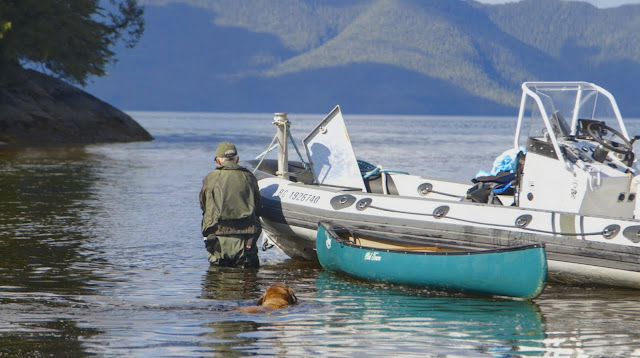
After hiking through streams all day in search of salmon, one of the last Guardians of the Great Bear Rainforest packs up his canoe and heads “home” to a house boat in perpetual motion.

Only 7 Guardians of the Great Bear Rainforest remain.

First Nations crests are painted as a community of activists fights to protect its lands from the construction of liquefied natural gas terminal in Flora Bank, one of British Columbia’s most important estuaries and key habitat for juvenile salmon.
Do you have any trips planned for the future, and if so what are you looking forward to?
I'll be rooted in California for the rest of the year while I wrap up my latest environmental documentary, so most of my immediate trips will be weekend getaways around the California coast. However, my next long-ish trip will be out to the Olympic Peninsula with the hopes of escaping back into the wild and immerse myself in epic scenery while on a kayak.

Searching for salmon in the Great Bear Rainforest.
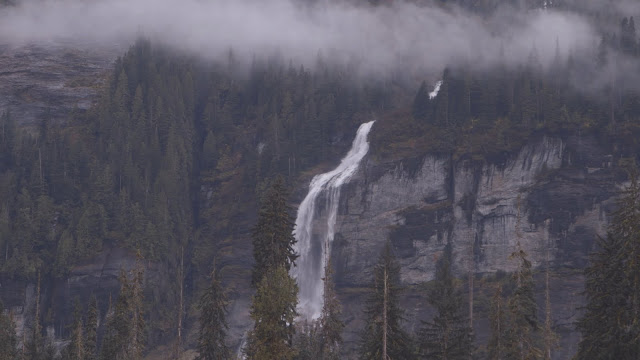
Tucked away deep in the Great Bear Rainforest, a massive waterfall gushes. Only a few have ever laid eyes on this beauty.
Any photography tips you want to share?
Patience. Try new perspectives. And, if doing documentary work, creating intimacy is key. Get to know your subjects and observe their worlds before pulling out your camera.

Sointula, BC.
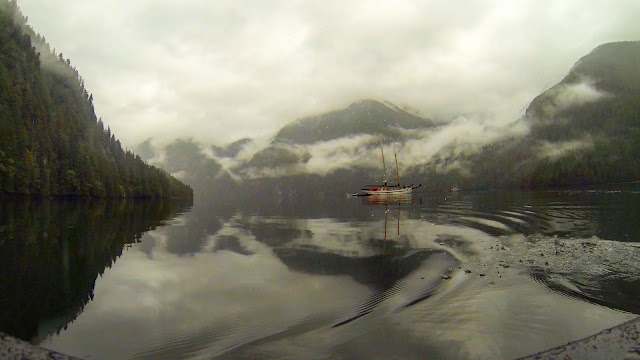
In the heart of the Great Bear Rainforest, BC.

Salmon smoking in Prince Rupert, BC. Salmon is the backbone of the coast’s economy, culture, and ecosystem.
Is there anything else you'd like to share with us?
All of the photos featured are from my new environmental documentary about the erosion of science and environmental management in Canada told through the eyes of the last Guardians of the Great Bear Rainforest.
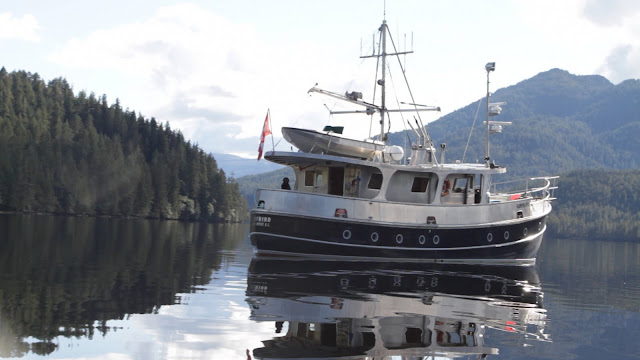
All aboard the Surfbird. Doug, one of the oldest remaining Guardians, has lived on the Surfbird for nearly 40 years in order to watch after the precious wildlife of the Great Bear Rainforest. Accompanied by his wife and 2 dogs, he lives far from common amenities like hospitals and groceries.

Great Bear Rainforest, BC.

Reflections of a world few have ever seen.
Here is a link to her successful Kickstarter: http://kck.st/1Tm0tF4
Guardians live on boats in the depths of the wilderness, full time, in order to monitor wildlife, particularly salmon, for the Canadian government. Their lives are epic: the oldest Guardian has been living on his boat for 39 years, and every day he moves his boat to a new location, drops anchor, and then wades through streams (while dodging grizzlies!) to count salmon. Guardians' nuanced knowledge of the waterways has helped British Columbia emerge as one of the best-managed fisheries in the world. But that could soon change.
A decade of debilitating budget cuts under Canada's last Prime Minister, Stephen Harper, hamstrung government science programs, dismantled habitat management, shuttered science libraries and left only 7 Guardians to look after salmon, the backbone of the economy, culture and food chain along the coast. The downsizing has hampered scientists' ability to monitor the environment at a time when it is needed most: proposals for liquefied natural gas terminals (LNG) dot the coastline, yet cutbacks have ensured no one will be there to measure their impact.
But just upstream, new Guardians are emerging.
The film is an exploration of the ethereal worlds of Guardians and the impending loss of their deep understanding of the natural world, cultivated over decades — and generations. They have diligently dedicated their lives to safeguarding the environment.
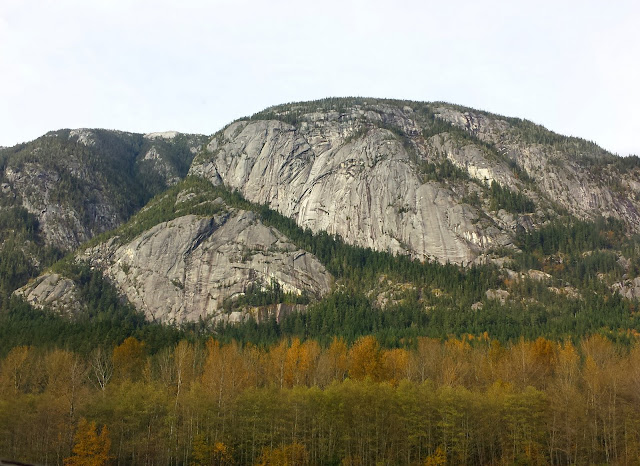
Bella Coola, BC.
And it is also a story about change. Canada's newly appointed Prime Minister, Justin Trudeau, has promised to re-instill an environmental management system based on facts and science. But as of today, the Great Bear Rainforest is still at risk.
Find The Guardian online:
Instagram: @guardian_thedoc
Facebook: https://facebook.com/guardiandocumentary/
Twitter: @guardian_thedoc
and find Courtney online:
www.courtneyillustrates.com
https://www.vimeo.com/courtneyquirin
instagram: @courtneyquirin
twitter: @caquirin

A humpback whale flukes its tale.
All photos courtesy and copyright Courtney Quirin


















